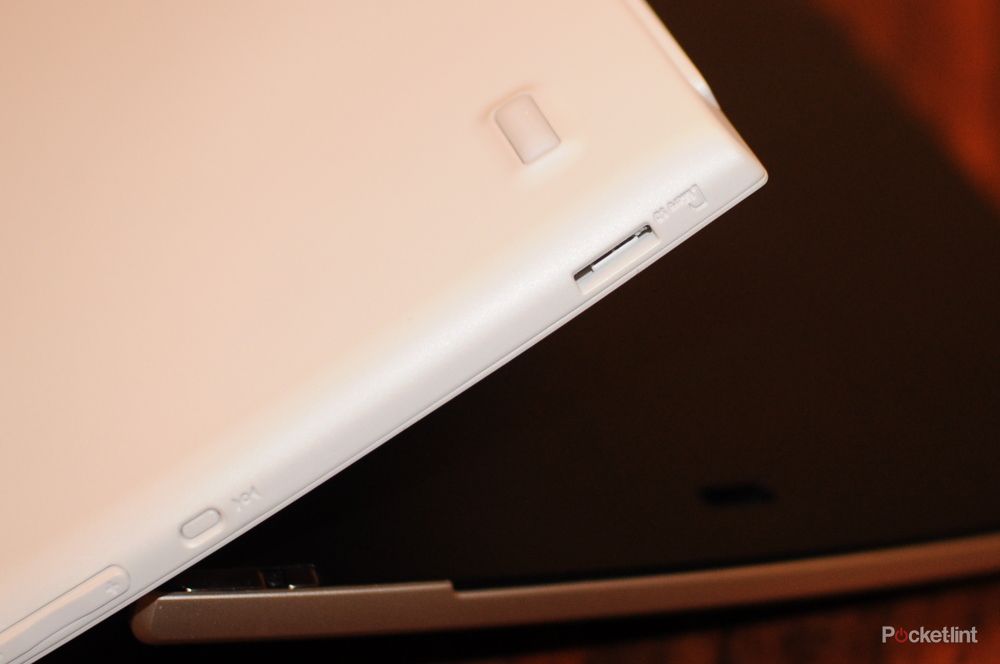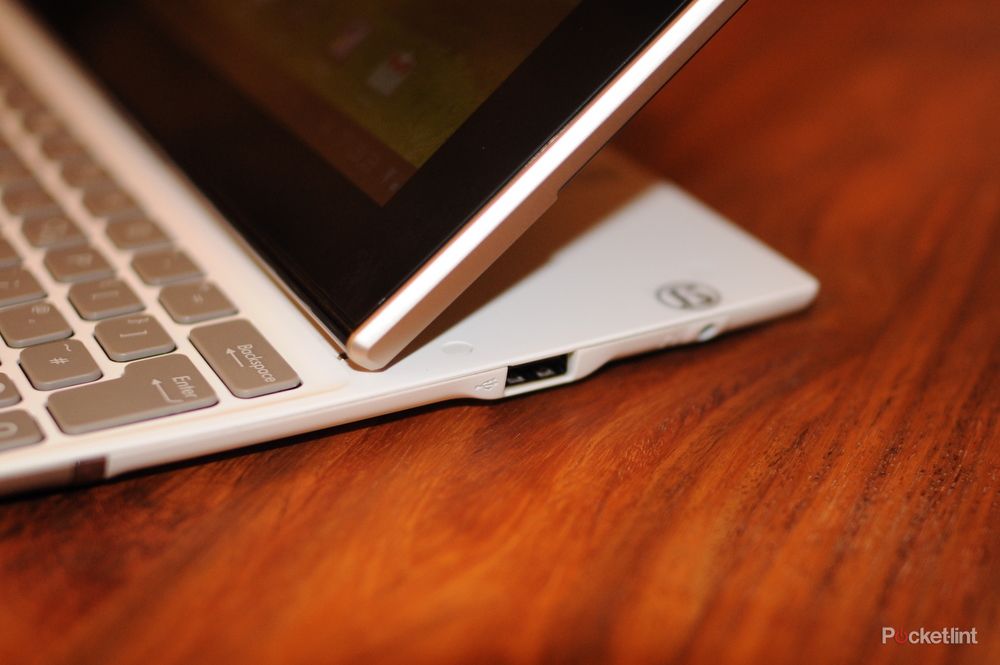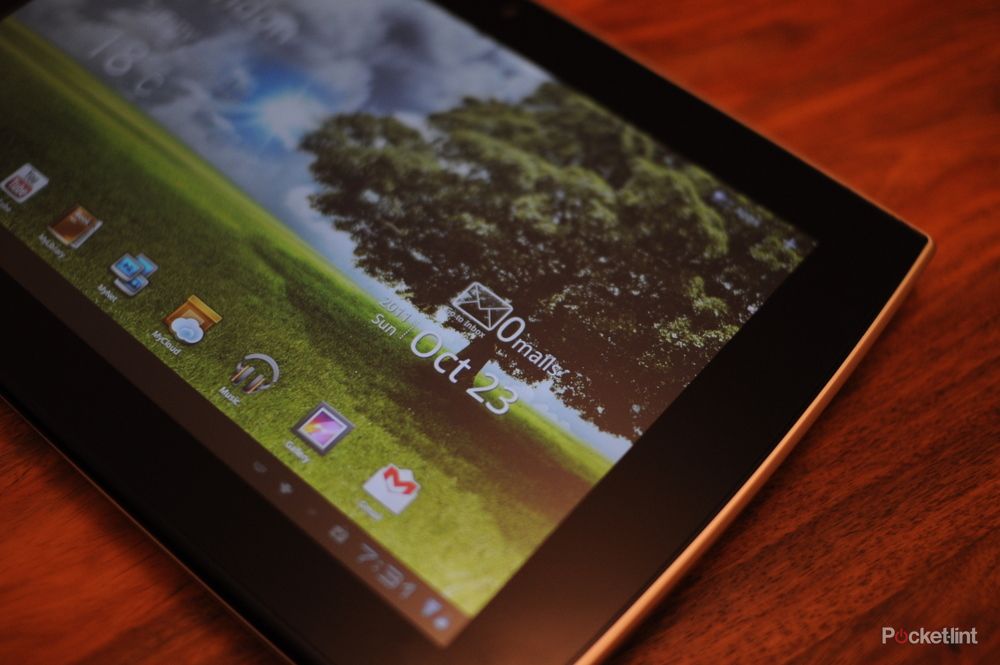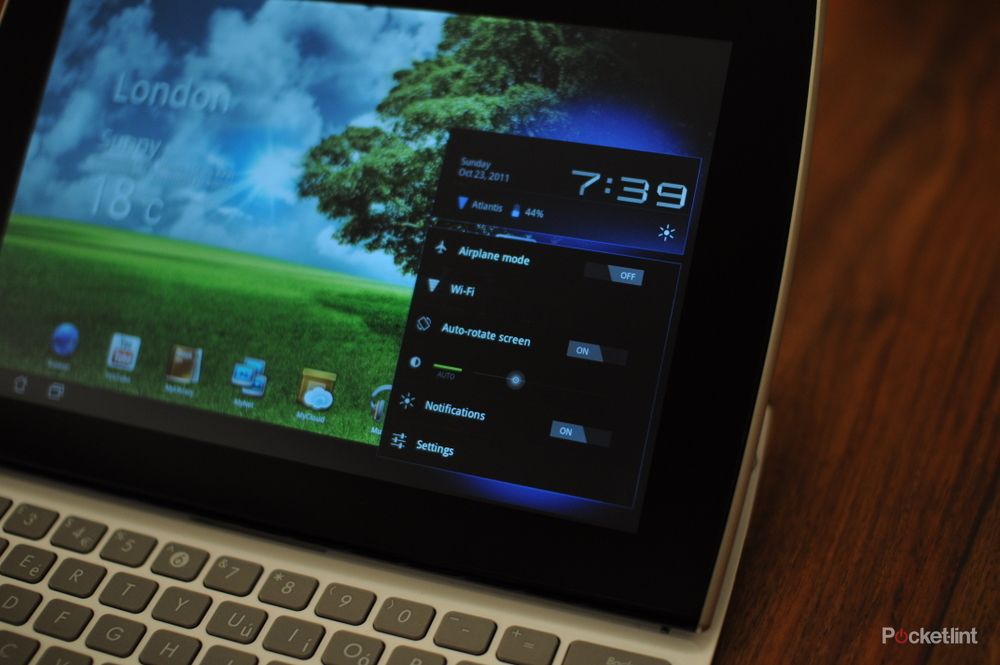It’s not much of an exaggeration to say that the Asus Eee Pad Transformer is one of our favourite Android tablets of all time. In fact, it’s pretty reasonable to argue that the Transformer is the best Android tablet on the market.
Our quick take
There’s almost nothing wrong with the Asus Eee Pad Slider.
Its worst crimes are that it’s heavy and larger than other, keyboardless tablets. If that worries you, get the new Asus Eee Pad Transformer when it comes out. Then you have the advantages of a detachable keyboard, which has an extra battery, and gives you the flexibility of leaving the keyboard at home, if you need a lighter tablet.
Aside from its size and dimensions, the Slider is a lovely machine. The screen is stunning, the USB socket makes it very useful as a serious work machine, and the keyboard is usable, apart from for the very lengthiest of writing assignments.
In Honeycomb, Google has managed to compete with iOS far more than it does with phones. Where the iPad is essentially just a large iPhone, Honeycomb devices add a whole set of features – USB drive support, for one – that set it apart from most phones. It’s more flexible than Apple’s OS and the Market has some genuinely useful apps to help you get stuff done, although we do wish there were more Honeycomb optimised versions of our favourites, like TweetDeck.
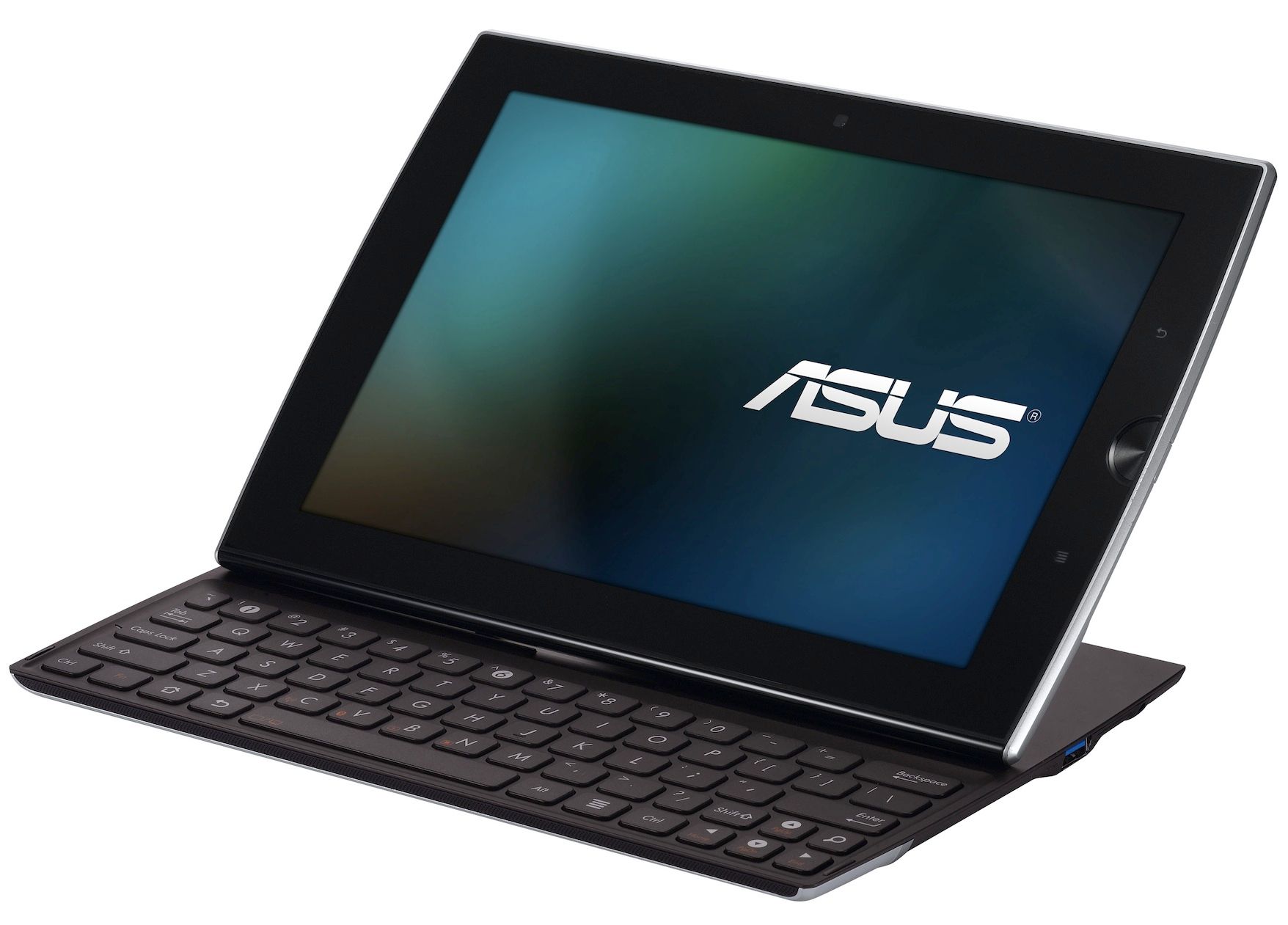
Asus Eee Pad Slider - 4.5 / 5
| FOR | AGAINST |
|---|---|
|
|
The optional keyboard makes a normal tablet into something far more useful. Instead of just inventing a 10-inch tablet that tries to ape other tablets, Asus considered what it thought would add real value. That, it turns out was extended battery life and a full QWERTY keyboard.
It is clearly that thinking that has led it to come up with the Eee Pad Slider, which offers most of the features you'd find on a netbook, but with improved battery life, and a screen that's a million times better.
Design and style
The first thing you’ll notice about the Slider is that it’s quite thick and quite heavy for a 10-inch tablet. Compare it side-by-side with the iPad and it will come off quite badly. As a device on its own, or compared to a laptop, the Slider is stylish and cool. The mechanism which allows it to open and show its keys is well made, feels sturdy and works well. It does take a little getting used to, the first attempts to pop it will leave you a little puzzled. But like riding a bike, once you’ve got it, you’ve got it.
The slider weighs around 960g, which makes it light for a laptop, but heavy for a tablet. It also makes it nearly as heavy as the 11-inch MacBook air.
As with most Android tablets, there are a pretty excellent selection of ports and sockets too. You’ve got microSD to begin with, which allows you to expand the in-built storage as well as a proper USB connector. The purpose of this is to allow you to read documents, photos and video stored on USB drives. It works well too, and the Honeycomb integration of this works perfectly.
Pop a USB key in the socket and Android instantly detects it and prepares it for use. Ours was FAT32 formatted, and when the OS had given it a quick scan, we were notified in the bottom right of the screen, and we were able to enter a file manager. This was all very simple, and while it’s not Windows level of control over files, it’s more than enough to keep you going on the road.
Other sockets include HDMI output, which might be very handy if you want to show presentations or kick-back and watch a movie - the Android Market now has movie and TV show rentals, for a price.
There is also a headphone socket, as you’d expect.
USB is a killer feature
The presence of a USB socket makes the Asus a very useful little machine. Open up the supplied Polaris office, and you’ve got a mobile solution that can rival any netbook, and put quite a few laptops to shame.
While you wouldn’t want to write a dissertation on the smallish keyboard, for writing a couple of emails, or even longer documents it’s top-notch. We wrote a decent amount on ours, and were blown-away by how good it was. We’ve used latops with less capable keys, and most netbooks don’t even come close.
But combine the power of USB for editing work documents on-the-fly and the cloud for storing your various content. Indeed, Asus will provide “unlimited” storage in its data-filled clouds too, which is a nice touch.
Display
Asus claims that its display is 50% sharper than the competition. That may or may not be the case, and the 1280 x 800 resolution might suggest otherwise, but it is an incredible screen. Everything on it bursts with vivid colour, and the detail is just stunning.
The detail comes into its own when it comes to editing or writing documents or browsing the web. As you have extra weight associated with the keyboard, it’s quite likely you’ll use it in the popped-open position. This works really well on desks but its diminutive size means it’s also practical on trains or planes, where a laptop would be an annoyance.
One of the things we like most is that the screen and keyboard work seamlessly together. So while you might search the tablet for something using the leyboard, it feels natural to then select the result with your finger. It makes us think that it won’t be long before laptops will make more of touch interfaces. It’s actually less clumsy and annoying than you’d think, and when you use a regular laptop, you’ll find yourself missing that interaction.
The good news is, there are shortcut keys to help you navigate around the device without using the screen very much. There is, for example, a home button in around the place you'd expect the Command key on a Mac or the Windows key on a PC. There is also a dedicated search button too, which allows you to find things on the device, and the web. You can easily just navigate using the keyboard, but there are times when it just feels a little quicker to tap the screen.
Video and audio
We decided to put the Asus through its paces as a video device too. We loaded on some MKV encoded video clips in both 720p and 1080p. What we found first is that the Slider naturally gifted when it comes to video.
It refused to play MKVs in its default configuration. To get those files working, we had to nip into the Android Market and use a third-party solution. It was no hassle though, and we were up and running in no time at all.
Because the Asus can read USB keys, we just put our files on an 8GB drive and fired them up. Some data transfer speed issues meant that sometimes it was better to copy the files into the device’s memory, but if you have a new, quick drive then that shouldn’t be necessary.
720p video played like a dream, it was smooth - USB restrictions aside - and had masses of detail. 1080p wasn’t though, and we didn’t have any luck in making it play those video files. This is no surprise, and to expect the Slider to manage this is asking too much of a reasonably modest and low-power processor.
Sound from the built in speakers is good, it's a little weak, and lacks bass, but it's very clear. It's not especially loud either, but for listening in a quiet environment, there's more than enough power for most things.
Battery
In our tests, the battery life was pretty amazing. Use it on-and-off all day, and it will easily last a whole day. Leave it in standby, and you'll see many days before the charge is exhausted. As a guide, we left it in a bag, unused and disconnected from Wi-Fi (but with the wireless turned on). During that time, we lost about 18 percent of the battery charge. So, using that logic, you'd get five days standby time, and probably more if you put the device into Aeroplane mode.
Honeycomb
While there aren’t a lot of native apps that support the larger, tablet, screen size, we assume this will change over time. Apps do scale quite well though, and there are better options that you find on the iPad for re-scaling options.
Where Honeycomb blows us away is in the apps that do support a full tablet experience. Take a look at the YouTube app, and you'll see a wall of video content that you can scroll around smoothly. It's not just YouTube on a tablet, it's a proper tablet-based interface that works well on a tablet. It sounds silly to say like that, but too often software companies forget to think about the device they are targeting.
Aside from that, Honeycomb is very user-friendly. We have recently given the slider to someone with very little tablet experience, and he was a big fan of how easy it was to use. Indeed, it was simpler to connect to his email service than the iPad. Settings are logical, the system bar always allows you to navigate around the OS and the settings are to be found on the right of the screen at all time. There are improved notifications too, and its dead easy to change some basic functions via the home screen menu.
For web browsing, it’s just brilliant though, the new Android browser has tabbed browsing, and it’s a very PC-like experience. There’s also the brilliance of Flash, which while not the be-all and end-all of the web, is certainly nice to have.
To recap
The Eee Pad Slider is a fantastic device. If you can live with the weight, then it's got plenty to offer, including doing all the jobs your netbook currently performs.

